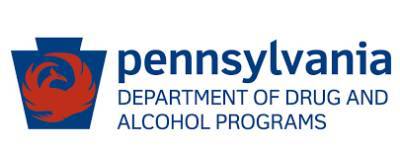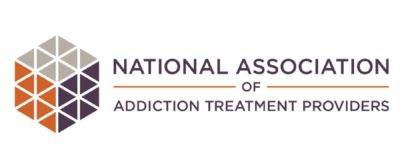Can Prescription Painkillers Lead to Heroin Addiction?
![]() | 4.9 Google Reviews
| 4.9 Google Reviews
![]() | 4.9 Google Reviews
| 4.9 Google Reviews
Peace Valley Recovery is located in Bucks County, Pennsylvania. Our mission is to provide patient-centered care that focuses on healing and recovery from addiction. This blog provides information, news, and uplifting content to help people in their recovery journey.
The unfortunate truth is that if you’ve abused prescription painkillers, you’re at a higher risk of developing heroin addiction. If you’ve used opiates in any way other than as directed by a doctor, you’re 19 times more likely to go on to use heroin. Developing a drug addiction doesn’t relate to your morality or strength of character. It often means you have a genetic predisposition to addiction that may have been triggered by environmental factors.
Some people believe doctors have been too quick to prescribe this type of medication in certain instances. As a result, opiate addiction has tripled within 10 years. When authorized for chronic or terminal pain caused by terminal illness, the use of opioids is humane and recommended. If you’ve been prescribed them for back pain, arthritis or migraines, it’s excessive and risky, especially if you take them for more than a week.
In some cases, you may have tried medication you’ve found or been given by friends or family members. However it starts, the mechanism is the same for heroin and prescription pills. When the source of painkillers runs out, the temptation to seek out dangerous alternatives can be overwhelmingly strong. This is especially true if you’ve become addicted to or physically dependent on opiates.
What Do Heroin and Painkillers Have in Common?
Heroin is an opiate, just like oxycodone, hydrocodone, codeine and fentanyl. It started as a pain management medication in the late 19th century. In some places, it’s still used during surgery or for terminal illness and goes by the name diamorphine. This type of drug binds to receptors in the brain known as opioid receptors, mimicking hormones that our body naturally produces and tricking our brain into believing it’s receiving something it needs. This is how physical dependence and withdrawal.

Using heroin causes the release of endorphins, which prevent you from feeling pain. In doses larger than many prescriptions call for, a powerful sense of euphoria is also felt. This occurs when an influx of neurotransmitters causes a rush. The immediate high is followed by several hours of intense relaxation and high pain tolerance. Opiate medication has the same impact on the brain — especially if you use them intravenously or crush and snort them.
Which Opiates are Commonly Abused?
Meperidine (Demerol)
The most common usage for meperidine is as a post-operation painkiller for moderate to severe pain. It can be highly effective when used as intended but should only be used on a short-term basis because the risk of addiction is so high.
Meperidine is one-tenth to half as potent as morphine. Heroin is generally two to four times as potent as morphine. This doesn’t mean Demerol is any less addictive or dangerous as a potential gateway drug. Upon cessation, users feel intense withdrawal symptoms. These often unbearable effects can be the driving force for those who no longer have access to an opiate turning to heroin.
Fentanyl
Fentanyl has been causing a furor in the media and across the US. This potent drug is a synthetic opioid that is 50 to 100 times more potent than morphine. It was developed to treat severe pain experienced after surgery or for people suffering from chronic pain related to terminal illness who have become tolerant of traditional opiates.
Fentanyl is cheap and manmade, meaning it can be produced without the requirement of procuring opium poppy seeds. As such, it’s becoming increasingly popular to cut it with heroin, and it has become a drug that causes serious concern in its own right. Fentanyl users may even find heroin too weak for regular use but will make do with it if they have to. The likelihood of a fentanyl user going on to use other illicit drugs is dangerously high.
Hydrocodone (Vicodin) and Oxycodone (OxyContin)
These opiate drugs are semisynthetic, meaning they’re derived from the poppy plant as well as going through a chemical process. These drugs are usually prescribed by a doctor to treat short-term pain following surgery or injury-related pain. As controlled substances, they don’t carry the risks of being contaminated or bulked up with other chemicals, but they can be gateway drugs nonetheless.
Once your body is dependent on them, withdrawal symptoms take hold when you try to stop. If you can’t get more of these substances, you may be tempted to find heroin to make you feel better.
Facts About Addiction to Painkillers
- Abuse is characterized in various ways. Taking medication in any way other than as directed by a doctor is considered misuse. Using medication that was given to someone else is drug abuse, and so is taking medicine for the intention of feeling high.
- No one is immune to addiction, and it doesn’t only happen to poor or homeless people. This type of drug is highly addictive. Opiates can lead people who would never have considered themselves sensation seekers to pursue a high.
- Approximately 23% of individuals who use heroin go on to develop an opioid addiction.
- Drug overdose is the leading cause of death in the US. In the last decade, deaths from prescription painkillers have outnumbered deaths from heroin or cocaine.
Data shows that the use of opiate painkillers and heroin are intrinsically linked. The rising incidence of opiate addiction is causing concern across the country, but recovery is always possible. To speak to someone about dependence or addiction to prescription painkillers, get in touch with Peace Valley Recovery at 267-662-2456.
Sources:
- National Institute on Drug Abuse: https://www.drugabuse.gov/publications/research-reports/misuse-prescription-drugs/overview
- MedlinePlus: https://medlineplus.gov/genetics/condition/opioid-addiction/
- National institute on Drug Abuse: https://www.drugabuse.gov/publications/drugfacts/heroin
- Centers for Disease Control and Prevention: https://www.cdc.gov/opioids/basics/fentanyl.html
- MedlinePlus: https://medlineplus.gov/druginfo/meds/a682117.html
- National Institute on Drug Abuse: https://www.drugabuse.gov/publications/drugfacts/fentanyl
- Johns Hopkins Medicine: https://www.hopkinsmedicine.org/opioids/signs-of-opioid-abuse.html
You May Also Like to Read
The Opioid Crisis in Pennsylvania
The Opioid Crisis in Pennsylvania: Trends, Challenges, and Solutions Authored by Chris Schumacher, | Medically Reviewed by [...]
10 Famous Celebrity Heroin Addiction
10 Celebrities Who Overcame Heroin Addiction Celebrity or famous heroin addicts go through the same [...]
How Drug Addiction Affects the Entire Family
How Drug Addiction Affects the Entire Family Addiction affects the family. It’s easy to think of [...]








